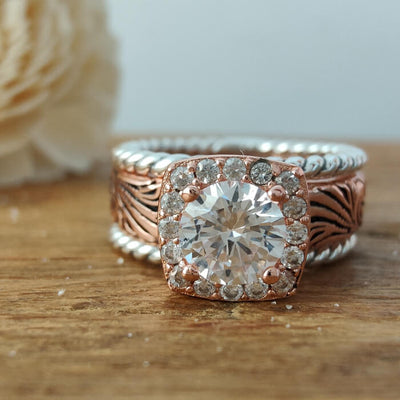Western jewelry has a rich and diverse history that reflects the cultural tapestry of the American West. From the rugged charm of cowboy aesthetics to the sleek lines of contemporary designs, the evolution of this jewelry style is fascinating. This article delves into the various phases of western jewelry, highlighting its significance and transformation over the years.

Historical Roots of Western Jewelry
The origins of western jewelry can be traced back to the early settlers and cowboys of the American frontier. Initially, jewelry served practical purposes, often made from materials readily available in nature. Silver, turquoise, and leather became staples in the crafting of western jewelry. But how did these materials evolve into the intricate designs we see today?
- Native American Influence: The artistry of Native American tribes significantly shaped western jewelry. Their use of vibrant stones and intricate beadwork introduced a unique aesthetic.
- Western Expansion: As settlers moved westward, they brought their own styles and traditions, blending them with Native American techniques.
- Rodeo Culture: The rise of rodeo culture in the early 20th century popularized western jewelry, with cowboys donning ornate belt buckles and bolo ties.
Modern Interpretations of Western Jewelry
In recent years, western jewelry has undergone a remarkable transformation. Contemporary designers have embraced traditional elements while infusing modern aesthetics. This fusion has led to a resurgence in popularity, appealing to a broader audience. What are some key trends shaping modern western jewelry?
- Minimalist Designs: Many contemporary pieces feature clean lines and subtle details, making them versatile for everyday wear.
- Eco-Friendly Materials: There is a growing trend towards sustainable practices, with designers opting for recycled metals and ethically sourced stones.
- Personalization: Customization has become a significant aspect, allowing individuals to create unique pieces that reflect their personal style.
Key Elements of Western Jewelry
Understanding the key elements of western jewelry can enhance your appreciation for its beauty and craftsmanship. Here are some essential components:
- Turquoise: This stone is synonymous with western jewelry, symbolizing protection and healing.
- Silverwork: Intricate silver designs, often featuring stamping and engraving, are hallmarks of western craftsmanship.
- Leather Accents: Leather is frequently used in belts, bracelets, and necklaces, adding a rugged touch to the overall aesthetic.
Where to Find Authentic Western Jewelry
If you're looking to explore the world of western jewelry, consider visiting specialized retailers that focus on authentic pieces. One such place is  , where you can find a curated selection of both traditional and contemporary designs. Their commitment to quality ensures that you are investing in pieces that honor the rich heritage of western jewelry.
, where you can find a curated selection of both traditional and contemporary designs. Their commitment to quality ensures that you are investing in pieces that honor the rich heritage of western jewelry.
In conclusion, the evolution of western jewelry is a testament to its enduring appeal. By blending historical influences with modern trends, it continues to captivate audiences worldwide. Whether you are drawn to the rugged charm of cowboy aesthetics or the sleek sophistication of contemporary designs, western jewelry offers something for everyone.
